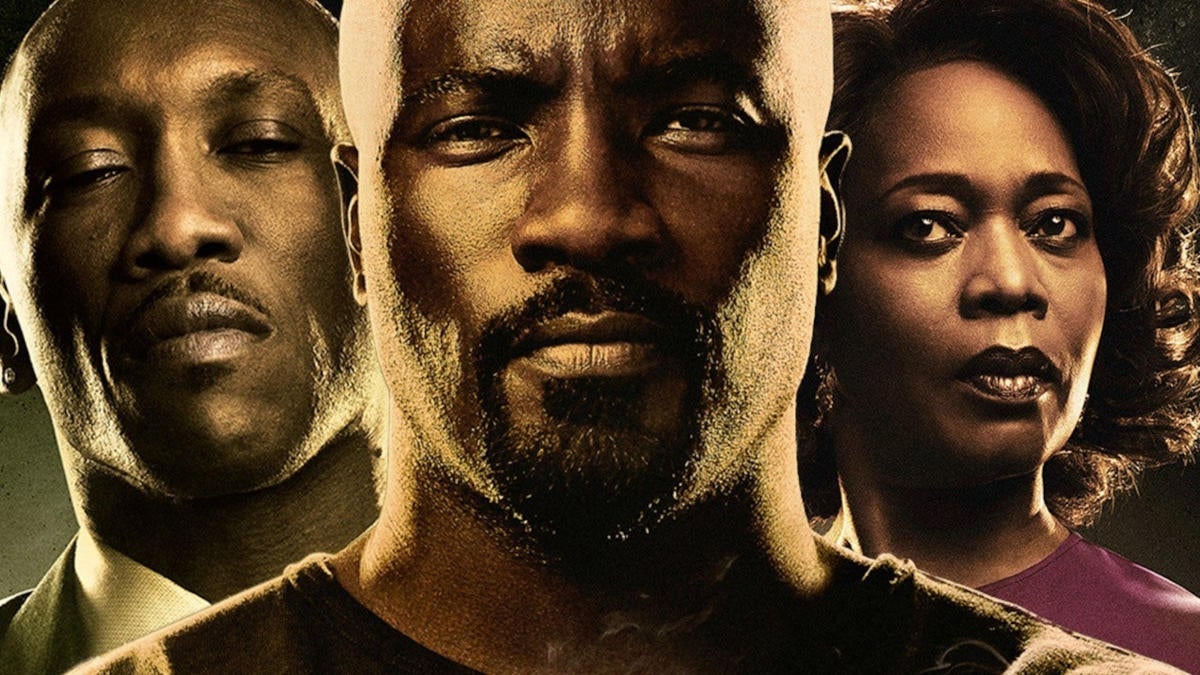Marvel's Luke Cage Showrunner Addresses Controversy of the Series' Villains
Marvel's Luke Cage showrunner Cheo Hodari Coker addresses the recent controversy over the Netflix series' choice of villains.
Marvel's Luke Cage showrunner Cheo Hodari Coker is responding to the recent controversy about the Netflix series' choice of villains.
In the last week there's been a social media post that went viral, in which a Marvel Netflix fan made the 'observation' that the hero vs. villain conflicts in Marvel's version of Harlem were all black-on-black conflicts:
"Obviously Luke Cage was created in the 1970s, but did y'all peek how the Marvel series depicted him having to fight MORE Black people to SAVE Harlem than white villains?" @silentpartner80 wrote in a tweet. "I did."
The post has generated over 4 million views and sparked debate about how Luke Cage selected and characterized its villains. After a week, Cheo Hodari Coker tweeted out some behind-the-scenes perspective as showrunner: "I was trying to keep Black people gainfully employed. LOL. Just saying..."
Luke Cage Villain Controversy Explained

Luke Cage getting slammed for its choice of villains is nothing new – in fact, in many ways it's the definitive take on this particular Marvel Netflix series.
There were four main antagonists spread across the two seasons of the Luke Cage Netflix Series:
- Cornell "Cottonmouth" Stokes (Mahershala Ali) – Season 1
- Willis Stryker/Diamondback (Erik LaRay Harvey) – Season 1
- "Black" Mariah Stokes-Dillard (Alfre Woodard) – Seasons 1 & 2
- John McIver/Bushmaster (Mustafa Shakir) – Season 2
Season 1 of Luke Cage had the surprise twist of killing Cottonmouth in the first half and introducing Diamondback in the second half – a turn in the show that many fans disliked, given the strength of Mahershala Ali's performance, and the more hokey comic book dynamic and backstory that came with Diamondback. While Mustafa Shakir's Bushmaster was a more developed and compelling villain in Season 2, a lot of fans never got over the missteps of Season 1.
The question of Luke Cage's villain choices gets even more complicated when trying to navigate the issue of race. As the original post hints, Luke Cage's creation in 1972 came at a time when Stan Lee and the creators at Marvel Comics (in this case John Romita Sr., Archie Goodwin, George Tuska, and Roy Thomas) were trying to diversify their line of characters – but often did so in regrettably stereotypical (if not cultural insensitive) ways, as measured by today's standards. Having black superheroes fight exaggerated caricatures of black supervillains (ex: Diamondback and Cottonmouth are depicted as pimps and/or hoodlums in the comics) was arguably considered exploitation, given the context in which it was created – and who created it.
It's far more nuanced and complicated to discuss what the depiction of Luke Cage battling black villains means when done by a creative team that is heavily black. As Coker points out, employing black actors on the show as much as possible is far from exploitative; having a black-led creative team use a white character as a cultural lightning rod is also arguably its own form of exploitation.
If nothing else is certain, it's this: Twitter won't be the place to figure this one out.
Luke Cage can be streamed on Netflix.
3comments